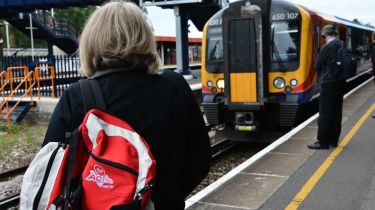Public transport
Can we get there faster by letting the train take the strain?
Millions of commuters rely on our public transport system to get to and from their place of work. And with politicians constantly encouraging us to ditch the car and ‘let the train take the strain’, we were keen to see how the bus, train and tube would fare in this commuting contest.
As the vehicles set off at 7.15am, our trip starts with a short walk to the nearest bus stop, where we planned to catch the 7.30am Abellio Surrey Number 515 bus from Cobham to Esher station. Unfortunately for us, it was running late. Plus, the single-decker Dennis Dart SLF wheezes around all the back streets, taking 30 minutes to complete a journey that would last only 10 minutes in a car.
Finally, Esher station comes into view – just as the 8.13am to London Waterloo leaves. The late bus has resulted in a missed train. Luckily, the frequent rail service means we don’t have to wait too long for the next one. But the journey has taken just over an hour so far, and we’ve only covered about six miles.
Getting a seat on the train is tough, but thankfully we’re far enough down the line to have that option – unlike travellers nearer the capital, who have to stand for the entire journey. There are only two stops, although with hundreds squeezing into the already crowded carriage at each one, it soon becomes stuffy and oppressive – no air-conditioning here. Still, you can take the opportunity to read a book or catch up on some E-mails: you can’t do that when your eyes are on the road.
Used - available now

2021 Land Rover
Range Rover
27,750 milesAutomaticDiesel3.0L
Cash £49,995
2022 BMW
3 Series Touring
52,456 milesAutomaticDiesel2.0L
Cash £23,800
2018 Mazda
6 Saloon
48,985 milesAutomaticPetrol2.0L
Cash £12,600
2023 Mercedes
EQC
55,207 milesAutomaticElectric
Cash £22,300We arrive at Waterloo at 8.46am. The total journey time is now one hour and 31 minutes and we haven’t come much further than if we’d been driving. Then, the mad rush to the Underground station begins, with a mass of people heading for the stairs and escalators.
The platform is so crammed that three trains go through before we get anywhere near the front of the queue. Even then, there’s plenty of pushing and shoving to get in the door. The train rattles and shakes through five stations en-route to our final destination at Goodge Street, where we step into one of the station’s four enormous lifts that take commuters back to daylight and fresh air.
Now it’s simply a short five-minute walk to the office, where we clock in at 9.24am and find that the Twizy, Citigo and Piaggio are all parked up already. The public transport system has been roundly beaten on this occasion, but that’s not to say it doesn’t have its advantages. Depending on where you live and the length of your commute, hopping on a train or bus can actually deliver quicker and less stressful travel than driving.
However, in our case, there was lots of hassle – and the longest journey time. Not only that, but the cost of bus fares and a season ticket for the train and tube would come to a hefty £3,752 per annum.
In London at least, you’d avoid the Congestion Charge and the cost of parking, but that’s still a huge chunk of cash. And when you want to travel outside your normal commute, you’ll have to set aside even more. So it’s not looking good for public transport.
Details
Chart position: 4Why? Politicians are constantly encouraging us to leave the car at home and let the train take the strain. So will using public transport for our commute work out cheaper, faster and less stressful than driving any of the vehicles tested here?







